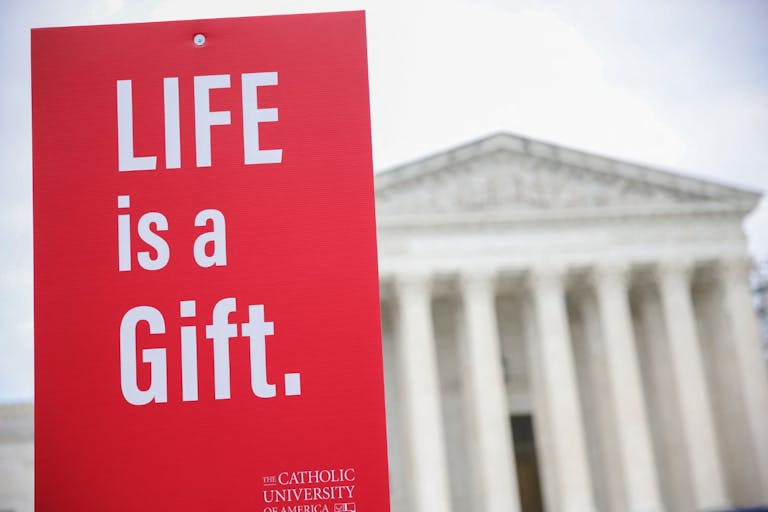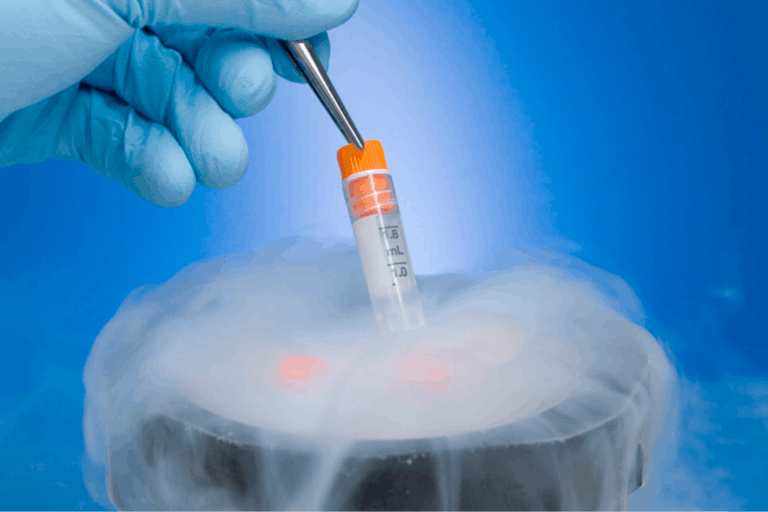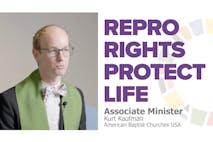
Supreme Court will hear case involving pregnancy resource center
Angeline Tan
·
Ohio Supreme Court to decide fate of divorced couple’s frozen embryonic children
A couple who married eight years ago and created embryos they originally intended to implant through in vitro fertilization (IVF) have divorced. Now, the fate of the children they created together, who are currently cryopreserved, could now be up to the Ohio Supreme Court.
According to the Columbus Dispatch, the Summit County couple, identified only by the initials R.N. and E.B.N., married in 2016 and created 14 embryos. The contract they signed before beginning the process stated neither would be allowed to use the embryos without the other person’s permission if they were to become separated or divorced.
Originally, during divorce proceedings, the trial judge ruled that the couple’s embryos should be donated to other couples. The court documents explained, “Wife wanted the frozen embryos awarded to her so that she could use them to become pregnant and Husband was adamant that he wanted to be disentangled from Wife and wanted the frozen embryos to be donated to another couple to be used to achieve a pregnancy.”
But the ex-wife appealed, and the 9th District Court of Appeals sided with her, saying that the embryos could not be treated as mere marital property to be divided.
“The frozen embryos are life in one of its earliest stages of development; the cells are human, alive, and capable of developing into a child,” they wrote, later adding, “[W]e determine that these matters should each be considered upon their unique facts taking into account the fact that the frozen embryos are not property, but life or the potential for life.”
Embryos are, of course, already human beings and are not simply human cells. They have their own complete DNA, distinct from that of their parents. Though small, they will grow and be able to live outside of the womb if they are allowed the chance.
READ: Sperm donor who took care of daughter called himself her ‘father’… then lost a custody battle
Furthermore, the court said that “[b]oth parties want the frozen embryos to be used to achieve a pregnancy,” with the dispute revolving around whether or not the ex-wife should be the one to carry, birth, and care for the children. The court also acknowledged that even if the embryos are given to someone else, the ex-husband would still be their biological father. The court said (emphasis added):
Regardless, if the parties’ general wish is successful, there will be one or more children in the world who are biologically related to Husband and Wife. Husband cannot escape that fact by donating the frozen embryos to an unknown couple. His opportunity to avoid that possibility ended when he agreed, along with Wife, to have the frozen embryos created. While the unknown couple could live across the country, they also could live next door to Husband.
Given the circumstances before this Court, we determine Wife should have the opportunity to utilize the frozen embryos to attempt to achieve pregnancy. This result honors the parties’ wishes that the frozen embryos be used to achieve a pregnancy. While Husband’s wish that Wife not be allowed to utilize the frozen embryos may be understandable in the context of a divorce, it also appears to be based on a desire to avoid the consequences of creating potential biological children.
However, consequences from such a choice are inevitable.
The frozen embryos contain biological material from both Husband and Wife, thereby connecting Husband and Wife to the frozen embryos irrespective of whether that is no longer desired. Wife’s request is more consistent with honoring the parties’ wishes while taking into account the fact the frozen embryos also are connected to Husband and Wife.
The ex-husband has now appealed to the Ohio Supreme Court, saying that the appeals court ruling would essentially force him to become an “involuntary parent,” and the Supreme Court has agreed to hear the case.
With the increased use of assisted reproductive technology, cases like this one have been increasing. Last year, a Virginia judge ruled that human embryos can be treated as ‘chattels,’ based solely on an 1800s law referring to custody disputes regarding slaves. In 2019, a Connecticut court ruled that embryos are “property” that can be destroyed. Conversely, the Alabama Supreme Court ruled that frozen embryonic children created via IVF were to be treated as children under the state’s Wrongful Death Act in a case in which embryos were destroyed by a fertility clinic without parental permission. This ruling caused massive backlash from the pro-abortion media, and in a shocking move, Alabama’s legislature hastily gave carte blanche to fertility clinics to do what they wish with embryonic children without consequence, and the governor signed that bill.
While it is understandable that one’s feelings may change about parenthood, the ex-husband in the Ohio case is refusing to acknowledge that, like it or not, he is a parent. He has created 14 children — children whom he wants to deprive of their biological father and their heritage and background. Ultimately, what should matter is what is best for the already-created children, and deliberately depriving them of a biological mother who wants them is mostly likely not in their best interest.
Live Action News is pro-life news and commentary from a pro-life perspective.
Contact editor@liveaction.org for questions, corrections, or if you are seeking permission to reprint any Live Action News content.
Guest Articles: To submit a guest article to Live Action News, email editor@liveaction.org with an attached Word document of 800-1000 words. Please also attach any photos relevant to your submission if applicable. If your submission is accepted for publication, you will be notified within three weeks. Guest articles are not compensated (see our Open License Agreement). Thank you for your interest in Live Action News!

Angeline Tan
·
Analysis
Sheena Rodriguez
·
Pop Culture
Cassy Cooke
·
Analysis
Cassy Cooke
·
Analysis
Cassy Cooke
·
Analysis
Cassy Cooke
·
International
Cassy Cooke
·
Pop Culture
Cassy Cooke
·
Analysis
Cassy Cooke
·
Analysis
Cassy Cooke
·
Analysis
Cassy Cooke
·